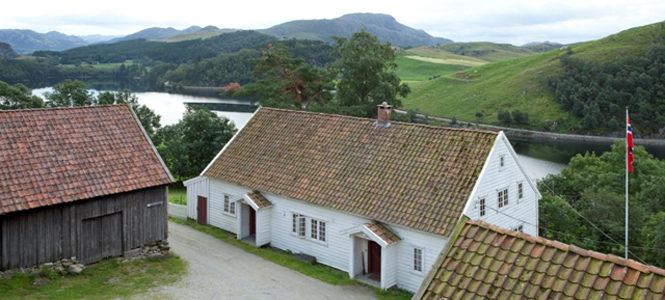Limagarden in the municipality of Gjesdal, is one of Jærmuseet’s museum farms. Today it is open for the public on Sundays from May – September.
The farm has existed since year 1600. Sheep have always been one of the main income at the farm. The farmers were also fishermen, and fished in the two lakes close to the farm. There were many kinds of tasks for the farmers that lievd at Limagarden, and spare time was unheard of. Wool was a very important resource. It was usually the man and the children that did the carding of the wool, while the wife was in charge of the spinning by hand to form yarn. The home was divided into two livingrooms, a kitched and a second level. The man, wife and the youngest children slept in one of the living rooms. The other living room was only used when they had important guests visiting. Teenagers and the maids slept upstairs.
The farmers
Three siblings were the last generation that lived and ran the farm. Tore and Jenny Lima gave the farm with all its buildings, tools and furniture to the municipality of Gjesdal with the purpose of the farm to be run as a museum. The municipality took over the farm when the last of the three siblings died in 1985. Gjesdal Farmers association and Gjesdal farmers’ wife association helped the municipality to turn the farm into a museum. All the furniture and tools were kept.
Special exhibitions
In the second level of the house, you will find a small exhibition with many tools used when working with the wool.
